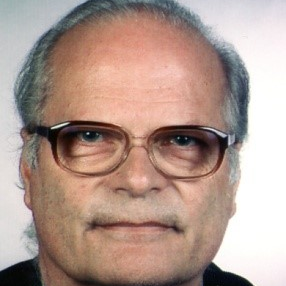Crystallization Thermodynamics
A special issue of Entropy (ISSN 1099-4300). This special issue belongs to the section "Thermodynamics".
Deadline for manuscript submissions: closed (30 June 2022) | Viewed by 80551
Special Issue Editor
Interests: glass and the glass transition, thermodynamics, structure, rheology, relaxation, and crystallization kinetics; thermodynamics and kinetics of first-order phase transitions, theory and applications; crystal nucleation and interplay of crystallization and glass transition
Special Issues, Collections and Topics in MDPI journals
Special Issue Information
Dear colleagues,
The theoretical description of crystallization processes has a long history. Nevertheless, it remains an actively developing area of research with a variety of unresolved and newly evolving problems and a wide spectrum of applications. The classical theory of nucleation and growth processes assumes that crystallization proceeds via the formation of small crystallites, with properties being essentially the same as those of the finally evolving macroscopic phases. This assumption allows one to describe theoretically nucleation and growth processes in a qualitatively adequate way but leads to significant problems in reconciling theory and experiment quantitatively. New theoretical developments and advanced experimental analysis are required to fill this gap, which is the topic proposed for this Special Issue. Particular problems in this direction are, for example, (i) the further elaboration of methods to determine the thermodynamic driving force of crystallization by advancing the knowledge of phase diagrams of multi-component systems and the methods of theoretical predictions of the properties of the melts, (ii) the further development of methods of specification of the curvature dependence of the surface tension in the classical theory of nucleation and growth and its generalizations, (iii) the specification of both bulk and surface properties of critical crystallites in dependence on the degree of deviation from equilibrium, (iv) the interplay of crystal nucleation and glass transition in cooling processes, (v) the qualitative change of the response of the ambient phase on crystallization near to the glass transition temperature, (vi) crystallization and growth in inhomogeneous media, and (vii) new methods of specification of the crystallization activity of heterogeneous nucleation cores. In the present Special Issue, it is proposed to concentrate on thermodynamic aspects being one of the essential ingredients of the theory of crystallization processes.
Dr. habil. Jürn W. P. Schmelzer
Guest Editor
Manuscript Submission Information
Manuscripts should be submitted online at www.mdpi.com by registering and logging in to this website. Once you are registered, click here to go to the submission form. Manuscripts can be submitted until the deadline. All submissions that pass pre-check are peer-reviewed. Accepted papers will be published continuously in the journal (as soon as accepted) and will be listed together on the special issue website. Research articles, review articles as well as short communications are invited. For planned papers, a title and short abstract (about 250 words) can be sent to the Editorial Office for assessment.
Submitted manuscripts should not have been published previously, nor be under consideration for publication elsewhere (except conference proceedings papers). All manuscripts are thoroughly refereed through a single-blind peer-review process. A guide for authors and other relevant information for submission of manuscripts is available on the Instructions for Authors page. Entropy is an international peer-reviewed open access monthly journal published by MDPI.
Please visit the Instructions for Authors page before submitting a manuscript. The Article Processing Charge (APC) for publication in this open access journal is 2600 CHF (Swiss Francs). Submitted papers should be well formatted and use good English. Authors may use MDPI's English editing service prior to publication or during author revisions.
Keywords
- crystal nucleation
- crystal growth
- general theory of phase transition
- phase diagrams
- prediction of properties of glass-forming melts
- glass and glass transition
- thermodynamics of nucleation
- surface thermodynamics
- surface energies in surfaces and interfaces
Benefits of Publishing in a Special Issue
- Ease of navigation: Grouping papers by topic helps scholars navigate broad scope journals more efficiently.
- Greater discoverability: Special Issues support the reach and impact of scientific research. Articles in Special Issues are more discoverable and cited more frequently.
- Expansion of research network: Special Issues facilitate connections among authors, fostering scientific collaborations.
- External promotion: Articles in Special Issues are often promoted through the journal's social media, increasing their visibility.
- Reprint: MDPI Books provides the opportunity to republish successful Special Issues in book format, both online and in print.
Further information on MDPI's Special Issue policies can be found here.






